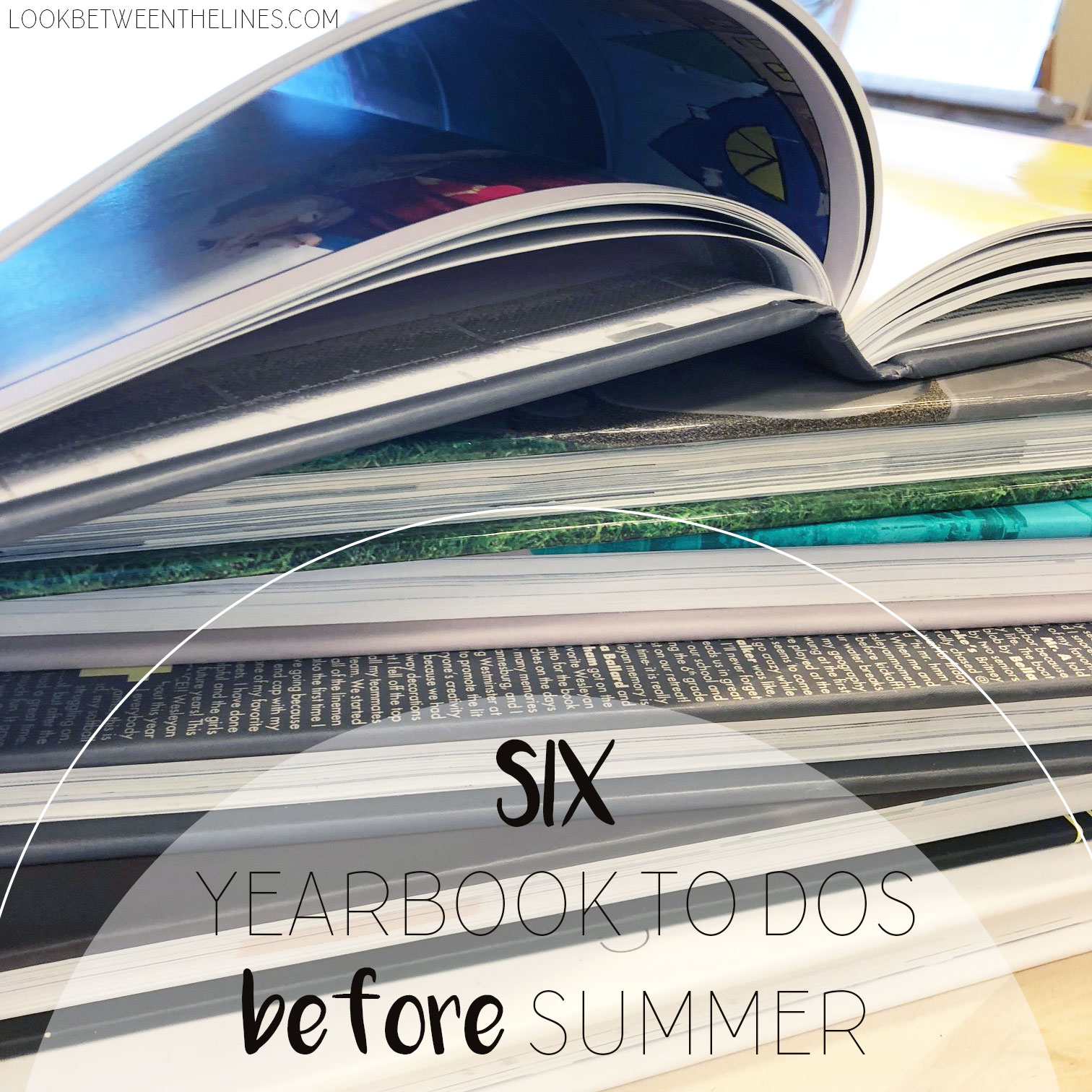It’s finally May. The end of the year is in sight, students are buzzing about finals, you are wrapping up assignments. You think it’s time to relax and wind down, but I hate to break it to you, if you are a yearbook adviser you should be planning your next year’s book starting now.
Shocking, I know. Whether you are a seasoned yearbook adviser or taking it on for the first time, try to complete the following items before you (and your students) leave for summer.
To Do #1:
The most important key to creating a successful yearbook is strong student leadership. You need to select responsible, organized, and hardworking students to be a part of your editorial staff. This is more difficult if you are about to start your first year as an adviser and do not know your yearbook staff well, but hopefully the previous adviser can help guide you in this. Over the years I have found that co-editor-in-chiefs are more successful than a single editor-in-chief. Often, one will be slightly more organized than the other, one may excel in visuals, while the other is more focused on writing. They help share the burden and guide their peers in this process. At the very minimum, select and notify your students of who will be editor-in-chief. If you are able, assign other editorial staff positions such as: photography editor, sports editor, fine arts editor, senior section editor, editor-at-large, etc. For my yearbook staff these positions change every year. Each student is blessed with different gifts, select roles that play to their talents. Typically the editorial staff is composed of returning staff members. Often, new editor roles are added as new yearbook students learn the ropes and their talents become more apparent.
To Do #2:
Check-in with your yearbook representatives and see if they host a summer workshop. My editorial staff and I attend ours every year. We often have a few new members join as well, which is often a sign of future leadership potential. At the workshop, we solidify our theme, fonts, colors, and design our cover. This helps us start the year ahead and with a solid plan. You want to plan this before the students leave so you can go ahead and collect money for registration and add it to their family’s calendar.
To Do #3:
Plan lunch with your incoming staff members. The yearbook is all about teamwork. Together you are creating the yearbook. Together you are responsible for equally covering every student, activity, athletic, and event. You want to act a like a team from day 1. By getting to know new staff members before day 1 you are creating a precedent for the class. Show them you want to get to know them, you care about them, and you are excited to work with them. They will be more willing to work hard and get the work done if they appreciate the team effort aspect. TIP: Bring in pizza or some type of outside food to make it even more special. Reach out to your future editorial staff parents to see if someone will volunteer to buy and deliver the food for you.
To Do #4:
Start planning next year’s book with your editors-in-chief. Try to develop the basics of your book before you leave for summer. Even if you plan to attend a summer workshop it helps to go in with a plan. Start big: consider what adjectives you want to describe your book. Zoom in: what themes fit in with those adjectives? Focus on details: what colors fit the theme and adjectives? What fonts visually tie into everything? I use these worksheets to help my students start this process.
To Do #5:
For high school, yearbook advisers go ahead and start thinking about the senior section. Assign your senior section editor and give them the responsibility of collecting information from parents over the summer. My co-advisor and I sit down with our senior section editor, create a Google Doc to add information and a Dropbox for parents to add information to. We type up an e-mail with all the instructions, what we need, and links to locations for the parents to add to. We request that senior quotes, baby pictures, senior pictures, and parent notes are all submitted by the start of the school year. Our senior section editor sends the e-mail out from their e-mail address and handles this over the summer (with assistance from us as needed).
To Do #6:
If you have already assigned your co-editor-in-chiefs or editor-in-chief send them home with the ladder and a pencil to start working on over the summer. Pencil is important because changes always come up. At least once in the planning process the ladder will be completely erased and started over. It’s just part of the book layout job. This process is much smoother if your editors already have an idea in place for how they want the book laid out.
If you are able to get the ball rolling on these 6 items in May, the start of the year will be so much easier. As a yearbook adviser, your job is to help oversee the creation of the book. Oversee is the keyword there. You are training your students to be self-sufficient, oversee their peers, delegate responsibility, and take ownership of a project that is about their entire school. If you get your students ready before the school year starts, they will be ready to take leadership from day one. My editors always start class on the first day of school. I want my staff to know to go to their editors first, the teachers second.
I was a yearbooker for two years in high school and was assigned the role of co-yearbook adviser my 5th year of teaching. Now, I am wrapping up my 5th year as an adviser, and I have loved every year of taking on this massive project. Being responsible for the yearbook is a huge undertaking. This is something students will cherish for years to come. They will pull it out twenty years from now to show their children their embarrassing high school mug shots. They will laugh, reminisce, and absorb the content of each page. It is a wonderful feeling knowing you were a part of that.
YEARBOOK ADVISER RESOURCES
- If you found these tips helpful check out my yearlong yearbook timeline. It breaks down what needs to be accomplished when from May the year before to the following May.
- Don’t plan a single day of you year in yearbook with my full year curriculum. It has everything you need for every single day.
- Want to check out the resources I use to plan out my yearbook? Check them out here.
- I think visual journals are a great way to inspire yearbook pages or as a project to layout pages. Check out my visual journal pages here.
Thanks for taking the time to check out my blog and yearbook tips and how-tos. Help me spread the word with others by sharing on your social media site of choice and subscribe below. Thanks for stopping by!


0 Comments